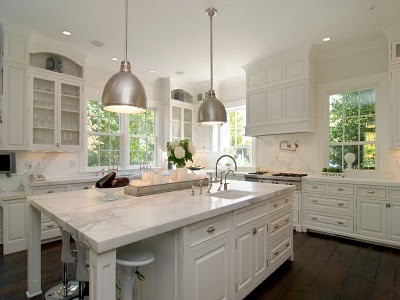Reinvent Your Kitchen's Appearance with Special Legs For Kitchen Island Accessories
Reinvent Your Kitchen's Appearance with Special Legs For Kitchen Island Accessories
Blog Article
Crucial Variables to Take Into Consideration When Picking Legs For Cooking Area Island
Selecting the suitable legs for a kitchen area island entails a mindful analysis of numerous aspects that can considerably affect both performance and aesthetic allure. As we check out these components, it becomes clear that each choice can have significant effects for the total cooking area experience.
Material Options
When selecting legs for a cooking area island, understanding the different material options is vital for accomplishing both visual charm and architectural stability (Legs For Kitchen Island). The choice of product considerably affects not just the toughness of the island but likewise its general layout and capability
Wood is a popular choice, using warmth and flexibility. Solid hardwoods, such as oak or maple, give strength and can be discolored or repainted to match the cooking area design. Metal legs, usually made from stainless steel or functioned iron, contribute a industrial and contemporary feel while guaranteeing longevity and security. These materials are resistant to wear and can sustain significant weight, making them optimal for bigger islands.
An additional alternative is engineered materials, like MDF or plywood, which can be more economical while still offering a variety of surfaces. Nevertheless, they might not offer the same degree of security as strong wood or metal. Lastly, products such as acrylic or glass can produce a modern look, though they might call for extra support to make sure stability.
Eventually, the selection of product for kitchen island legs must line up with the preferred performance and the total theme of the kitchen.
Style and Layout

When considering style, the shape and coating of the legs are critical. Tapered legs can supply a sense of lightness and sophistication, while thicker, a lot more robust legs can convey toughness and security. In addition, the finish-- be it repainted, tarnished, or natural-- should match the kitchen cabinetry and kitchen counter products to develop a unified look.
In addition, the style of the legs can additionally mirror individual preference. Personalized or decorative legs, such as those featuring complex makings or one-of-a-kind geometric shapes, can act as focal points, adding character and character to the kitchen area. Eventually, the ideal selection will certainly not just boost capability however also elevate the aesthetic allure, making the kitchen island a standout feature of the home.
Height Considerations
Selecting the appropriate elevation for kitchen island legs is vital, as it straight influences both capability and convenience. The basic elevation for a kitchen island usually varies from 36 to 42 inches, straightening with typical counter top elevations.

It is also necessary to account for individuals' choices and elevations. Tailoring the height can make sure a comfy experience for all household members, making the kitchen island a more functional and pleasurable space.
Weight Assistance
Ensuring adequate weight assistance for kitchen island legs is vital for both safety and functionality. The kitchen area island typically serves multiple objectives, consisting of food preparation, dining, and additional storage space, necessitating a durable support framework. When choosing legs, it is important to think about the general weight capability called for based upon the island's intended use and read review the products that will be positioned on it.
The selection of material for the legs plays a substantial role in their weight-bearing capacities. Solid timber, steel, and durable composites usually give remarkable strength compared to lighter materials. In addition, the design of the legs-- whether they are straight, tapered, or have a pedestal type-- can affect their ability to distribute weight effectively across the framework.
Constantly consult the supplier's requirements relating to load limitations to guarantee that the legs can maintain the intended weight without jeopardizing safety. In recap, selecting cooking area island legs with appropriate weight support is vital for developing a practical and secure cooking room.
Installation and Maintenance
Appropriate setup and upkeep of cooking area island legs are vital for guaranteeing durability and security. This typically entails securing the legs to the island base making use of proper bolts, guaranteeing Going Here that the legs are degree and straightened.
When mounted, regular upkeep is essential to maintain the integrity and look of the legs - Legs this post For Kitchen Island. For wood legs, routine cleansing with a moist cloth and application of suitable wood gloss can protect against wetness damages and maintain their coating. Steel legs may call for a gentle cleansing solution to remove grease and grime, complied with by a dry cloth to avoid corrosion formation
Additionally, inspect the legs consistently for indicators of wear or damages, such as cracks or loosened joints. Tightening up screws or screws as required can likewise lengthen the life-span of the legs. By sticking to these setup and maintenance methods, home owners can guarantee that their kitchen island remains sturdy and visually appealing for years to find.
Verdict

Visual coherence is extremely important in picking the design and layout of legs for a kitchen area island, as these aspects considerably affect the general setting of the room. Tapered legs can provide a feeling of lightness and beauty, while thicker, much more robust legs can convey toughness and security.Selecting the proper height for kitchen area island legs is essential, as it straight affects both performance and convenience. In recap, picking kitchen area island legs with ample weight support is important for creating a secure and useful cooking area.
In final thought, choosing legs for a kitchen area island necessitates mindful consideration of numerous elements, consisting of product choices, design, height, weight assistance, and installment.
Report this page